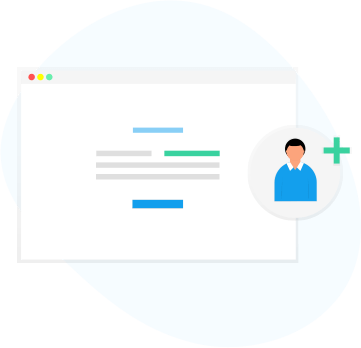To start with your audits and controlled visits the following steps can be made.
Odito platform; Following steps can be managed by the system administrator
in order to perform audit or control visits to your distributed locations such as
stores, dealers, restaurants, warehouses, contract manufacturers, suppliers.

Enter User Information
- Create your organizational chart (operations manager, regional manager, locations).
- User information can be entered into the system by integration or collective assignment to the relevant roles.
Question / Category / Main Category pools are filled
- Questions, categories, titles to be used during visits or audits will be defined in the system.
- Question Types are defined and information about how questions should be answered during the audit is entered as text or visuals for each question.


Create your Forms
- The data that is thrown into the pools for questions, categories and main categories will be linked to the form creation screens.
Visiting / Auditing
- Audits / visits are assigned via the Calendar Assistant on the web platform or field users (auditor, regional manager, group manager, etc.) assign audits / visits to themselves from mobile devices.
- These audits are sent by the field staff from the mobile platform to the headquarters by filling in the questions with comments, photos and videos.


Action Process is Activated
- Insights revealed during the audits , during an audit occurring errors are corrected during the action process.
- By accessing the action reports, the actions completed before and after the deadline are measured on the basis of stores, restaurants, dealers, manufacturers and suppliers.
Review the reports
- Each completed audit or visit form automatically generates a result report on the web platform.
- In parallel; category-based report, region-based report, question-based reports and personnel-based reports; it is viewed by the managers of stores, restaurants, suppliers, manufacturers and dealers, and by they are affiliated with regional directorates and operation directorates.


Enter User Information
- Create your organizational chart (operations manager, regional manager, locations).
- User information can be entered into the system by integration or collective assignment to the relevant roles.

Question / Category / Main Category pools are filled
- Questions, categories, titles to be used during visits or audits will be defined in the system.
- Question Types are defined and information about how questions should be answered during the audit is entered as text or visuals for each question.

Create your Forms
- The data that is thrown into the pools for questions, categories and main categories will be linked to the form creation screens.

Visiting / Auditing
- Audits / visits are assigned via the Calendar Assistant on the web platform or field users (auditor, regional manager, group manager, etc.) assign audits / visits to themselves from mobile devices.
- These audits are sent by the field staff from the mobile platform to the headquarters by filling in the questions with comments, photos and videos.

Action Process is Activated
- Insights revealed during the audits , during an audit occurring errors are corrected during the action process.
- By accessing the action reports, the actions completed before and after the deadline are measured on the basis of stores, restaurants, dealers, manufacturers and suppliers.

Review the reports
- Each completed audit or visit form automatically generates a result report on the web platform.
- In parallel; category-based report, region-based report, question-based reports and personnel-based reports; it is viewed by the managers of stores, restaurants, suppliers, manufacturers and dealers, and by they are affiliated with regional directorates and operation directorates.

